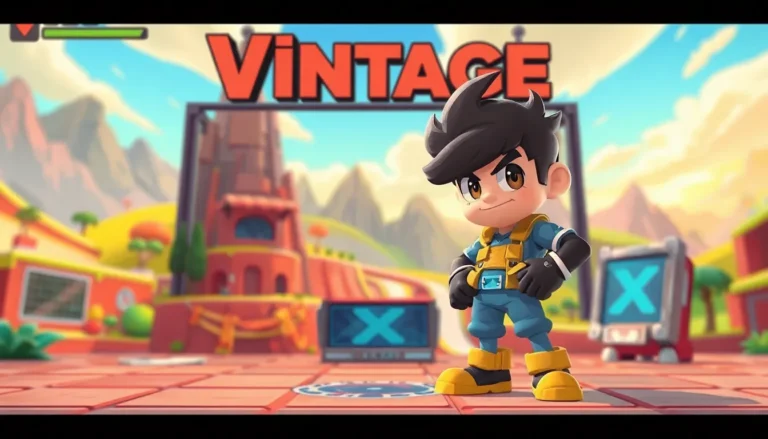In a world where attention spans are shorter than a cat video, brands must adapt or risk fading into the background like that one sock that always disappears in the laundry. Enter video-first branding, the secret sauce that’s turning heads and driving engagement. With the power of visuals and storytelling, brands can capture hearts and minds faster than you can say “viral sensation.”
Imagine your brand not just telling a story but showing it in vibrant color and captivating motion. Video-first branding isn’t just a trend; it’s a game changer. It transforms mundane messages into dynamic experiences that resonate with audiences. So, if your marketing strategy feels like a flat tire, it’s time to pump it up with the engaging magic of video. Let’s dive into how this approach can elevate a brand to new heights and keep it front and center in the fast-paced digital landscape.
Table of Contents
ToggleUnderstanding Video-First Branding
Video-first branding prioritizes video as the primary channel for delivering brand messages. This approach leverages captivating visuals and storytelling to create compelling narratives that engage audiences effectively.
Definition and Concept
Video-first branding refers to using video content as the cornerstone of marketing strategies. Brands harness motion graphics, animations, and live-action footage to convey their values and messages. This method aims to create stronger connections with viewers by appealing to emotions through visual storytelling. Organizations integrating video into their branding easily communicate their identity and resonate with target audiences.
Importance in Today’s Market
In today’s market, attention spans are shorter than ever. Statistics indicate that video content can improve engagement rates significantly, often exceeding text-based content. Utilizing video allows brands to convey information quickly and effectively, making it easier for consumers to absorb messages. Since 85% of internet users in the U.S. watch online videos monthly, it becomes clear that brands must adapt to consumer preferences. Emphasizing a video-first approach helps brands stand out and fosters deeper relationships with audiences, which ultimately drives brand loyalty.
Benefits of Video-First Branding
Video-first branding offers significant advantages in capturing audience attention and building meaningful connections. Brands can adapt to changing consumer preferences by prioritizing video content.
Increased Engagement
Video content naturally attracts viewers’ attention more effectively than static formats. Engaging videos keep users watching longer, with studies showing video engagement rates can exceed 80%. High-quality visuals and dynamic storytelling encourage viewers to share content, amplifying reach. Platforms like Instagram and TikTok see increased user interaction with video content, creating a loop of engagement. Eye-catching animations and relatable narratives draw in potential customers, driving them to interact with brands beyond mere views.
Enhanced Brand Storytelling
Compelling narratives benefit from the emotional weight that video brings. Authentic storytelling resonates with audiences, allowing brands to communicate values and ideals in relatable ways. Through a combination of visuals, sounds, and texts, brands can create deeply immersive experiences. A well-crafted video can convey complex messages in seconds, increasing retention rates. Visual storytelling allows brands to illustrate real-life scenarios that highlight their products’ advantages, fostering connections that text cannot achieve.
Strategies for Implementing Video-First Branding
Creating videos requires leveraging innovative content techniques that resonate with audiences. First, brands should focus on storytelling, weaving narratives that reflect their values and connect emotionally. Engaging visuals, such as high-quality animations or real-life testimonials, enhance viewer experience. Consistent branding elements in videos should also reinforce brand identity. Additionally, incorporating user-generated content fosters authenticity and invites audience involvement.
Selecting the right distribution channels amplifies video reach significantly. Popular platforms like Instagram and TikTok cater to video-first strategies, attracting millions of active users. Each channel serves specific demographics, so tailoring content for platforms is crucial. Short-form videos may thrive on TikTok, while longer content performs better on YouTube. Integrating videos into email marketing campaigns captures attention effectively, driving higher engagement rates. Brands should track analytics to refine strategies, ensuring optimal performance across platforms.
Challenges of Video-First Branding
Video-first branding presents various challenges that brands must navigate to succeed in a digital landscape. Resource allocation becomes a significant concern, as producing high-quality video content often requires substantial investment. Companies must budget effectively to cover costs like equipment, personnel, and post-production. Smaller brands might struggle to compete with bigger companies that have extensive resources. Ensuring a balance between quality and budget can impact production capabilities.
Measuring effectiveness poses another challenge in video-first branding. Establishing clear metrics for success plays a crucial role in evaluating video performance. Analyzing engagement rates, view counts, and audience retention provides valuable insights. Brands need to track these metrics regularly to refine video strategies. Additionally, assessing the emotional impact of videos can be complex. Utilizing tools like A/B testing allows brands to determine what resonates with viewers, enhancing future video campaigns.
Embracing video-first branding is no longer optional; it’s essential for brands aiming to thrive in a competitive digital landscape. By prioritizing video content, brands can create engaging narratives that resonate deeply with their audiences. This approach not only enhances communication but also fosters emotional connections that drive loyalty.
As consumer preferences shift towards visual content, brands must adapt their strategies accordingly. With the right storytelling techniques and distribution methods, they can amplify their reach and impact. Investing in high-quality video content pays off by capturing attention and encouraging sharing across platforms.
Ultimately, the success of video-first branding lies in its ability to transform brand messages into compelling experiences that stand out and leave a lasting impression.






